Back in 1910, Eugene Burton Ely became the first pilot to successfully take off in a plane from the deck of a Navy ship. Other ships were soon adapted for launching planes, and by 1927 the US Navy had built two Lexington-class aircraft carriers which became the foundation for the future fleet. The US still has the largest carrier fleet in the world, handily outnumbering every other country. But there’s a lot more to aircraft carriers than big, flat ships on which planes can land.
10. The Japanese Built Submarine Aircraft Carriers
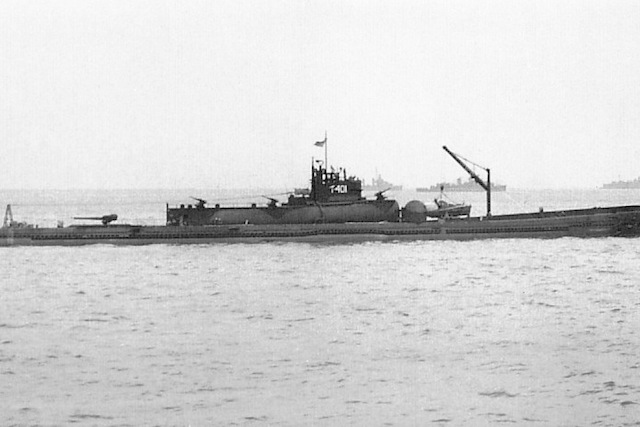
The Japanese were innovators in the world of aircraft carriers. During the Second World War, Japanese forces were looking for a way to gain the upper hand on the US. With a larger force and greater weaponry, the US was a formidable opponent, so Japan needed something unexpected. What they came up with was the I-400 class of submarine.
At 400 feet long and displacing 6.56 tons, these machines were enormous. They were designed to carry three bombers for 37,500 miles without needing to refuel. The bombers were held in a 115-foot long hangar that also held an 85-foot catapult to launch them.
In order to manage the cramped spaces, they outfitted the bombers for water landing. A crane could retrieve them and place them back in the sub. The wings folded along the fuselage and the tail folded up as well so that they’d fit in the hangar.
Only two of the subs were ever launched and the war ended before they reached their intended target. They had painted the bombers on board with US markings, a violation of the rules of engagement, and would have likely been able to cause a lot of damage before they were discovered had things gone differently.
9. Brazil Tried to Sell One on eBay

It cost the US military about $12.8 billion to build the latest Ford class aircraft carriers in the fleet. Now, obviously, the US military has basically the cream of the crop when it comes to aircraft carriers and their technology is a little more cutting edge than other countries. But that doesn’t mean an aircraft carrier in the UK, China, or Brazil is just slapped together from popsicle sticks and duct tape.
For those interested in owning their own carrier, they can be occasionally picked up at a bargain. In 2019, the Brazilian government auctioned off their carrier the Sao Paulo with bids starting at $1.25 million. The country had previously purchased the carrier from France a decade earlier at over $12 million. Just like with cars, that depreciation is a killer.
At the time Brazil retired the vessel in 2017, it was the oldest commissioned aircraft carrier in the world, having been built back in 1963. Brazil had barely even been able to use it in the years they owned it thanks to massive repairs that were needed and a series of deadly accidents, including an explosion and a fire. In 2021, the ship was sold for scrap.
In 2003, the country tried to sell another carrier, the Minas Gerais, on eBay but the listing was pulled because it’s illegal to sell military ordnance on the site.
8. An Illusion on Carriers May Cause Pilots to Crash
If the movie Top Gun taught us nothing else about aircraft carriers, it’s that landing and taking off from one is an adrenaline rush. But all that fast-paced excitement is built upon a foundation of serious danger. What movies like that don’t mention is that it’s not enemy aircraft taking out most pilots, but things like spatial disorientation.
Pilots are susceptible to something called somatogravic illusions. This happens thanks to any rapid acceleration and deceleration, like pilots taking off and landing will experience. As you accelerate, your body feels like it’s pitching upwards. The opposite happens when rapid deceleration. These illusions are just that, illusions. But if you react to them as some pilots do, the results can be deadly as you try to compensate for movement that is not actually happening.
It’s an affectation of the inner ear that causes you to feel this way. A pilot on an aircraft carrier taking off may feel the need to push the nose of their plane down on takeoff, fearing that they’re angling too high. This can cause them to literally dive right off the edge of the carrier to the ocean.
Part of the reason many aircraft carriers use catapult launchers for their planes, and pilots don’t even touch the controls until the plane has been launched from the deck, is so that this illusion can’t cause them to overcompensate and crash. Planes are angle to take off at speeds up to 160 knots totally hands free in just seconds.
7. US Law requires a Minimum of 11 Aircraft Carriers
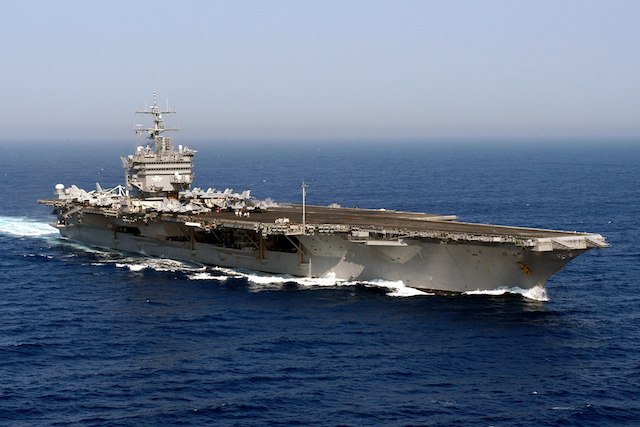
The US Navy currently has 11 aircraft carriers in service, and they work a grueling schedule. The military recently deployed the USS Nimitz for 10 straight months. In the past, six months was the longest deployment crews could expect, and this was typical of how things went during the Cold War.
Back in the day, the US had up to 15 aircraft carriers operating at one time. The 11 that are in service currently are the minimum number that US law allows, in fact. There must be 11 in service, but there are still a few issues with that. The most recent carrier in the fleet, the USS Gerald R. Ford, which cost nearly $13 billion, isn’t actually operational right now. It’s possible it won’t be in service until 2024. The rest of the fleet is taking up the slack with extended stays at sea that are pushing crews to their limits.
There has been discussion about adding extra carriers to the fleet to help alleviate some of the burden, especially since there are technically only 10 right now, but so far it looks like no help is coming for the crews deployed at sea on extended runs.
6. Nuclear Aircraft Carriers are Refueled Every 25 Years
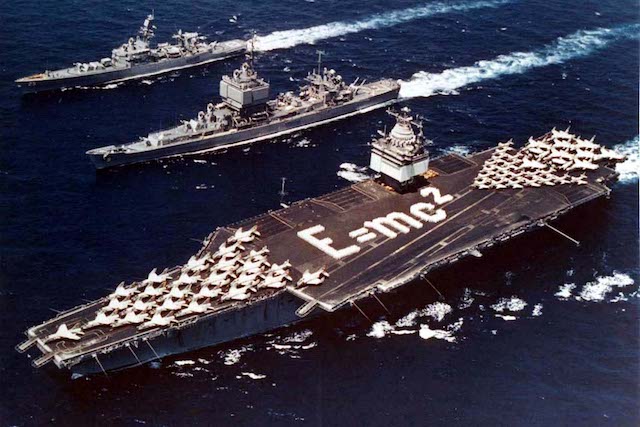
In 1961, the US Navy welcomed the USS Enterprise into the fleet. As the world’s first nuclear-powered aircraft carrier, it was groundbreaking. The vessel stayed in service until 2012 when it was rendered inactive, and then in 2017 it was fully decommissioned.
Nuclear carriers were huge game changers for the American Navy. Unlike traditional vessels which are limited by their fuel sources and, in specific, how long they can operate without refueling, a nuclear carrier has no such limitations. Of course they needed to be refueled sometimes, but that was once every 25 years.
Without having to outfit the craft with a massive engine to burn coal or oil, plus keeping bulky fuel on board that wastes space, nuclear carriers were free to devote that space to other resources, including weapons. That meant a nuclear carrier was not only formidable in the way it could avoid frequent fuel stops, but it would also be better outfitted for war. A nuclear carrier is able to hold 30% more weapons than a non-nuclear counterpart.
5. The US Has More Carriers Than the Rest of the World

At the height of their aircraft carrier arsenal, the United States had more carriers than the entire rest of the world combined. During the Second World War they had commissioned over 150 of them, in fact. As of 2021 the United States has to settle for having several fewer carriers but still one more than the rest of the world combined.
As we mentioned earlier, the US has 11 carriers in its fleet at all times. At one point there were 15 in services and it’s possible the number will go up again one day. But for now, the US is number one with 11, while the second largest fleet is a three-way tie between China, the UK, and Italy. All three countries are sporting two aircraft carriers.
Coming in third place are France, Russia, Spain, and India who all have one a piece. And that’s it. No other nation has an active aircraft carrier any longer, though other countries did have some in the past. Brazil, for instance.
4. The Navy Had Freshwater Carriers
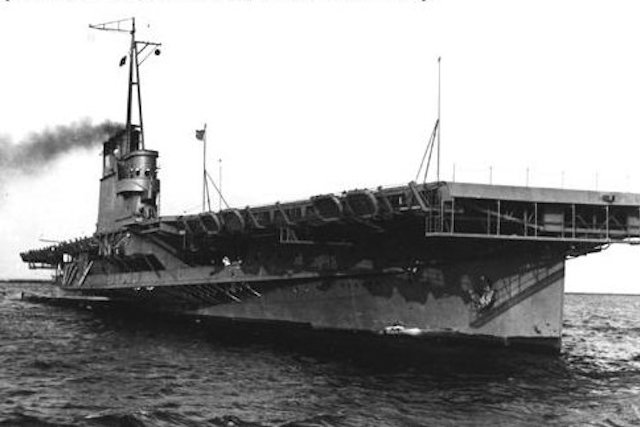
Currently the US aircraft carrier fleet is split up as the Atlantic Fleet and the Pacific Fleet. Every other country in the world that has an aircraft carrier has it deployed in an ocean as well, because that just makes sense. Where else would someone ever need to use such a vessel?
The two most unique carriers in US Navy history were the USS Wolverine and the USS Sable. Both of these carriers ran on coal at a time when most other ships had switched to fuel oil. And while that is certainly noteworthy, it wasn’t what made them stand out the most.
The Wolverine and the Sable were both stationed in Lake Michigan, miles from any ocean. These were invaluable for the war effort, as thousands of naval aviators learned to take off and land at sea on these two vessels before heading out onto the ocean.
The Wolverine was originally a paddle-wheel steamer. The Sable was a slightly larger paddle-wheel liner that joined the Wolverine in being converted over to military use. After Japan attacked Pearl Harbor, the military had no pre-made vessels to spare for the war effort, so they adapted Wolverine and Sable to military use from their former roles as luxury tourist vessels.
By 1943, 100 pilots per day were training on the ships. After the war, both ships were quickly decommissioned and sold off for scrap.
3. It Costs Millions Per Day to Operate One
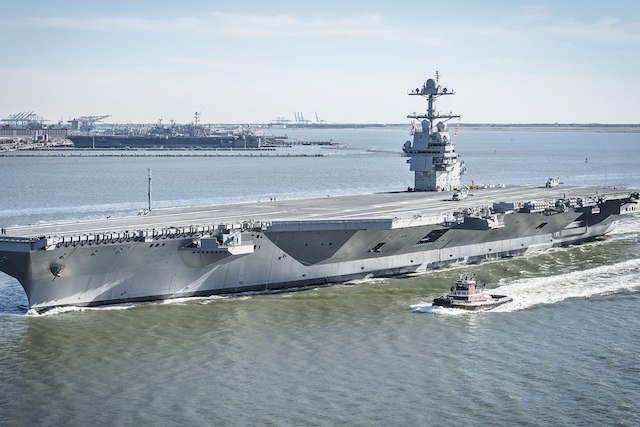
If a new Ford-class aircraft carrier sets the government back over $12 billion, it’s worth looking into what keeping the vessel running is going to cost. A Nimitz-class carrier has a crew of 6,012. Ford-class carriers are larger but have a lower crew complement. The cost of nuclear fuel, crew salaries, weapons, power, food and more can really add up.
A carrier strike group, which includes the air wing as well as an attack sub and five surface combatants along with the carrier itself, operates at a cost of $6.5 million each and every day. That means a fleet of 11 carriers is going to have an approximate cost of $71.5 million per day. That works out to around $26 billion every year to run the fleet of aircraft carriers.
These numbers are definitely rough since the Gerald Ford is not in service right now, so that means things are costing less. On the other hand, we already addressed that the fleet is running on an increased schedule these days with longer deployments, so that is increasing the overall budget. But when you’re dealing with numbers like $26 billion, then quibbling over a few million here and there doesn’t matter.
2. Tony Scott Spent $25,000 to Move One
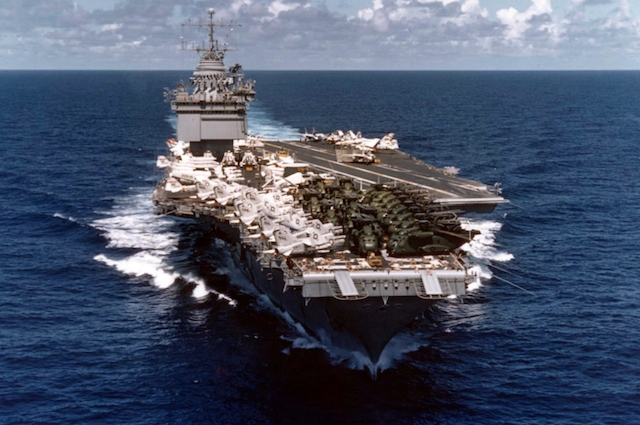
With the incredible costs associated with operating aircraft carriers, you may be wondering about one often overlooked aspect of the fleet and how they are used. When you see an aircraft carrier in a Hollywood movie, just how did it get there?
Many movies will actually use stock footage of aircraft carriers, in particular takeoffs and landings for aircraft. Typically, this isn’t a huge part of the plot, so it’s not a big deal. But the 1986 movie Top Gun was about pilots who spend a good chunk of time flying to and from aircraft carriers in a very realistic fashion. And since this was well before the era of constructing CG realities, something else had to be done. The film’s director Tony Scott got the Navy to agree to let him use the USS Enterprise as well as a squadron of fighter jets.
The studio paid a large sum of money to make use of the equipment, including nearly $8,000 an hour on fuel costs for the jets. But one of the most remarkable costs was related to the USS Enterprise itself.
There was a scene in the movie that Tony Scott felt would be better lit with the sun at a different angle. That meant the carrier needed to be turned. The entire shot was going to take about five minutes, Scott had to personally write a check for $25,000 to cover the cost of adjusting the carrier’s position.
1. One Was Built from Ice
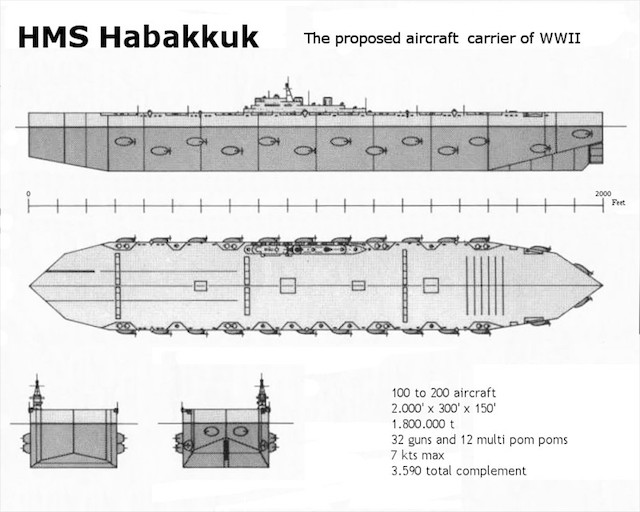
One of the most incredible things about an aircraft carrier is the fact that it works at all. The Ford-class carrier has a displacement of 100,000 tons. That a steel vessel of that size can operate on the water at all seems incredible. Ships back in the day were all made from wood because it floated, and it took some scientific know-how to adapt ship designs to vessels that should otherwise sink.
Wood and steel are definitely the most common materials that come to mind when we think of any kind of boats, and of course polymers and fibreglass have their place as well. But for the job that an aircraft carrier does, steel has to be the answer. Except not necessarily. There was a time when pykrete was used.
Pykrete was the invention of Geoffrey Pyke, a man tasked with doing the impossible. Make an aircraft carrier that could never sink. Achieve this by making it out of ice.
Pyke proposed the idea to British forces who, for some reason, actually thought it was ingenious. Pykrete was the substance Pyke proposed to build this structure, a mixture of 85% water to 15% wood pulp. The resulting ice was almost bafflingly strong, yet workable. You could easily shape the ice and even saw off pieces to develop the structure, but at the same time bullets and torpedoes barely damaged it at all. It was also incredibly resistant to thawing out once it had been frozen.
Pyke’s creation was known as Project Habbakuk and was soon transplanted to Canada. Winston Churchill wanted a 2,000 foot long one, so the Canadian military set about building a proof-of-concept model in a lake in Alberta. The end result was 60 feet long and weighed 1,000 tonnes.
The full scale model never came to fruition for a number of reasons. The cooling system would have tripled the cost, and they needed 300,000 tonnes of wood pulp. There was also no way to build one on the timeline they had.
The project was eventually abandoned, and it took a solid year for the test model to finally melt.